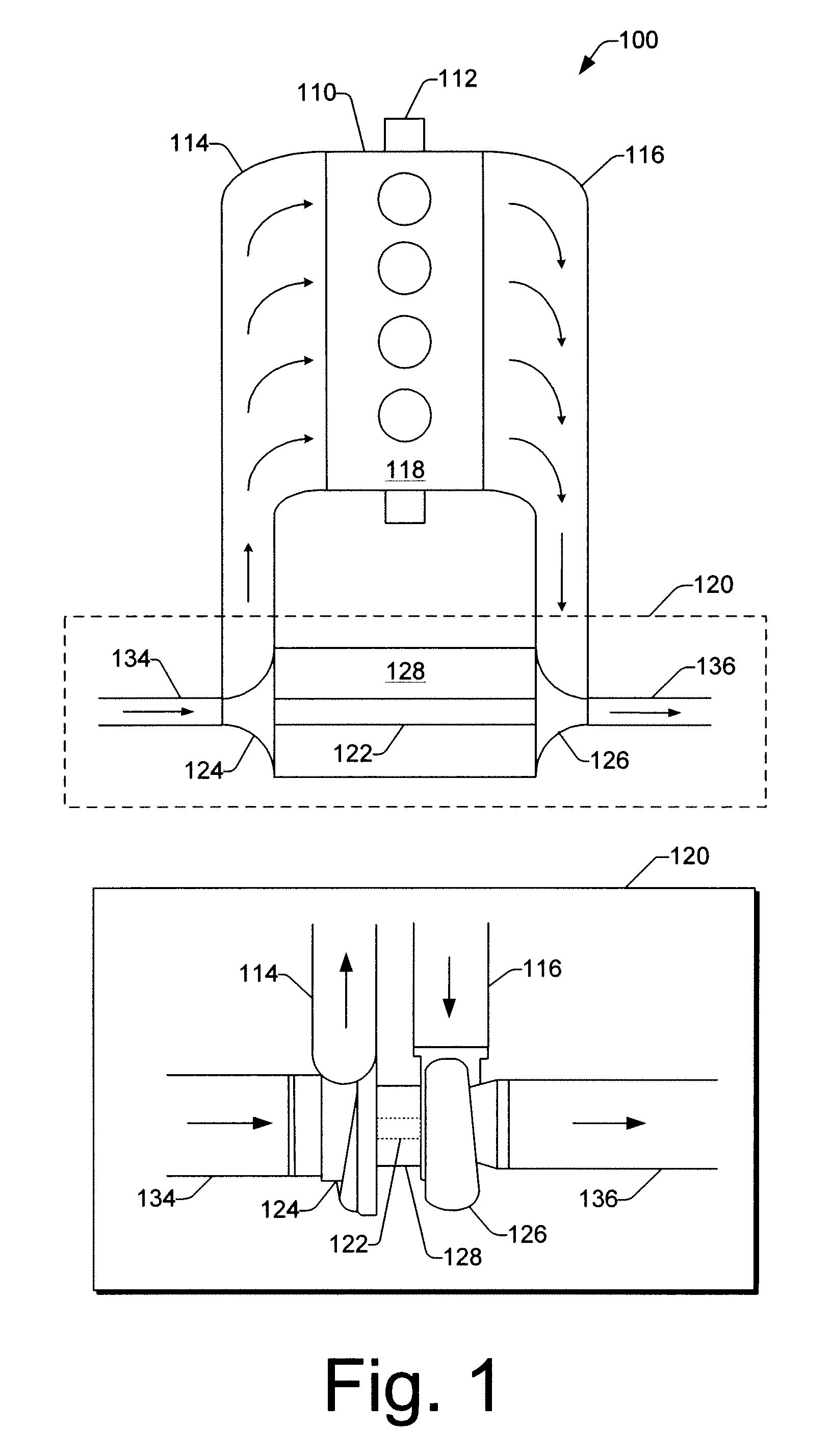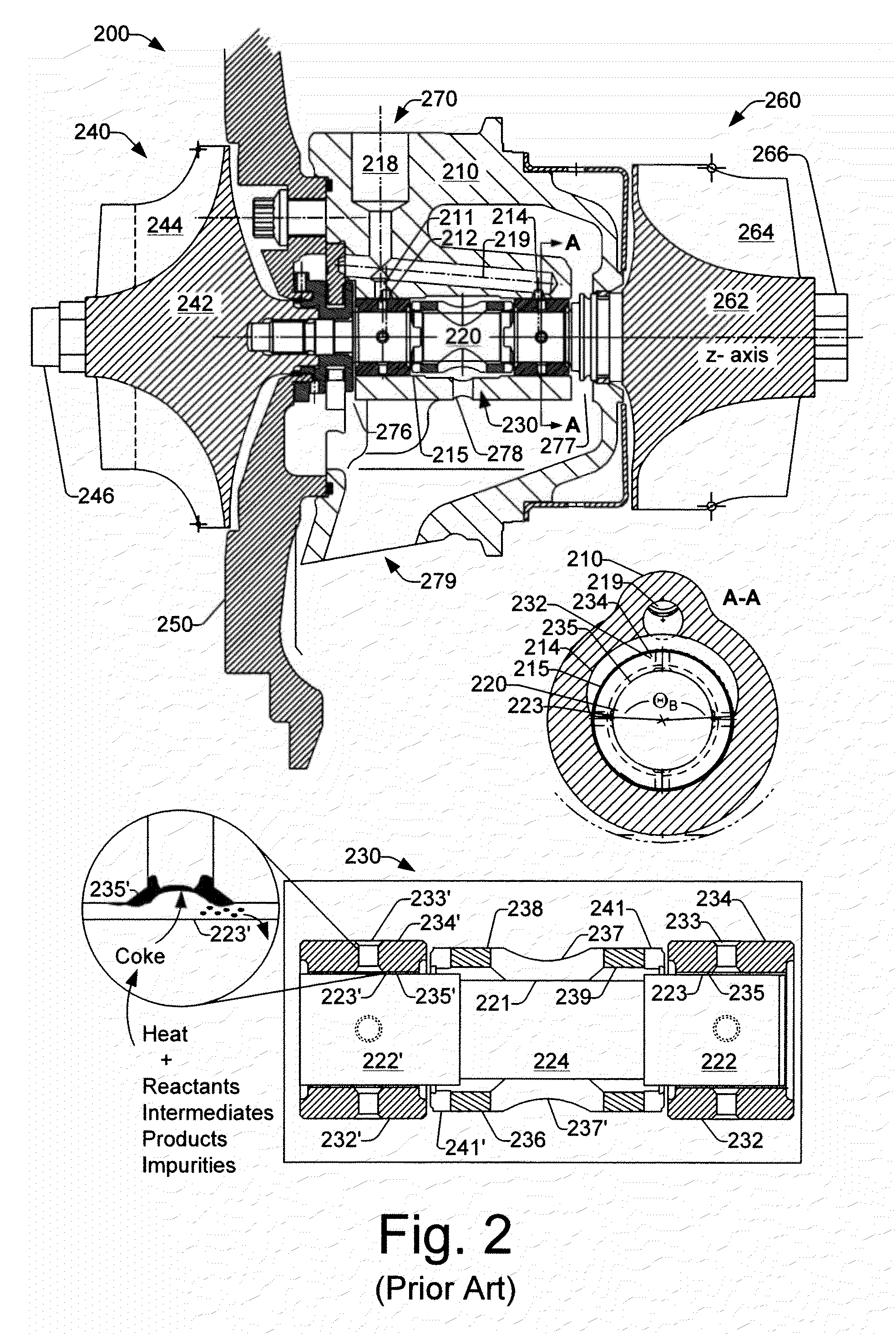Helical inner diameter groove journal bearing
a journal bearing and inner diameter technology, applied in the field of bearing systems, to achieve the effect of enhancing the flow of lubricant, facilitating shaft movement, and high viscosity
- Summary
- Abstract
- Description
- Claims
- Application Information
AI Technical Summary
Benefits of technology
Problems solved by technology
Method used
Image
Examples
Embodiment Construction
[0042]FIG. 3 shows an exemplary bearing system 330 in the center housing 210. A cross-sectional view of the bearing system 330 along a line A-A shows the bore 219 joining a semi-annular groove 414 (e.g., shaped differently than the groove 214), an exemplary journal bearing 420 and the shaft 220. The bearing 420 includes an outer surface 440 and an inner surface 450. During operation, a damping film forms between the outer surface 440 and the bore 215 of the housing 210 and a lubricant film forms between the inner surface 450 and the outer surface 223 of the shaft 220. As mentioned, the bearing 420 may float in the bore 215 as supported by the damping film. While the damping film and the lubricant film both participate in heat transfer, the damping film also acts to absorb vibration energy that may affect rotation of the shaft 220 in the bearing 420.
[0043]In FIG. 3, the close-up cross-section of the bearing system 330 shows a turbine side bearing 420, a compressor side bearing 420′ a...
PUM
| Property | Measurement | Unit |
|---|---|---|
| temperatures | aaaaa | aaaaa |
| angle | aaaaa | aaaaa |
| azimuthal angle | aaaaa | aaaaa |
Abstract
Description
Claims
Application Information
 Login to View More
Login to View More - R&D
- Intellectual Property
- Life Sciences
- Materials
- Tech Scout
- Unparalleled Data Quality
- Higher Quality Content
- 60% Fewer Hallucinations
Browse by: Latest US Patents, China's latest patents, Technical Efficacy Thesaurus, Application Domain, Technology Topic, Popular Technical Reports.
© 2025 PatSnap. All rights reserved.Legal|Privacy policy|Modern Slavery Act Transparency Statement|Sitemap|About US| Contact US: help@patsnap.com



